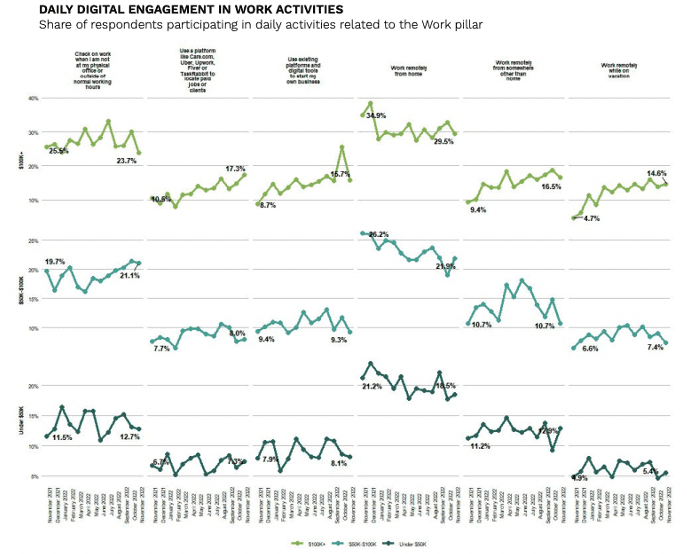
Mirroring increases in other pillars of the connected economy, by the third quarter of 2022, consumers were working remotely and online 10% more than they did one year prior.
That’s the upshot of the PYMNTS report “12 Months of the ConnectedEconomy™” comparing changes in consumer behaviors between November 2021 and November 2022, and finding that work-from-home and hybrid work increased despite the easing of COVID-19 restrictions.

“When we first examined consumers’ online work habits in November 2021, 53% worked in either an entirely remote or hybrid work environment, splitting their time between home and the office. Many workers opted to continue working from home — at least on a part-time basis — even as their employers began reopening physical offices,” the study found.
Over the ensuing 12 months, more workers embraced remote work, either part time or exclusively.
“By the end of the year, 58% of consumers worked in a digital-only or hybrid work environment. This means 8 million more consumers were part of the remote workforce in November 2022 than just one year earlier,” we found.
While the move to remote and hybrid work arrangements progressed steadily, the summer months saw a spike — possibly a seasonal effect that stuck — as we noted that “when summer came along, millions of employees reported working remotely from vacation destinations and other locations, such as cafés, airports and family members’ homes.”

Patterns we tracked included greater use of online collaboration platforms and digital tools, as well as increases in blended work-leisure travel and related trends.
“High-income employees were the most likely to report working on vacation in July, while mid-income consumers sought new, interesting locations to work outside their homes,” the study found. “Nine million more high-income consumers worked while on vacation in July than at the beginning of the year, and 5 million more mid-income workers worked from outside locations.”